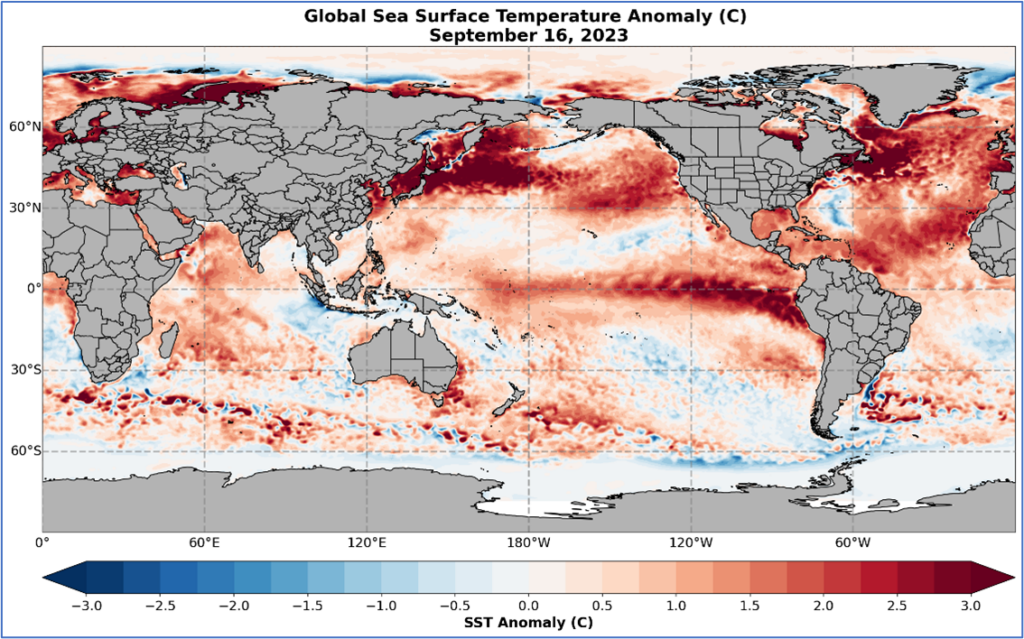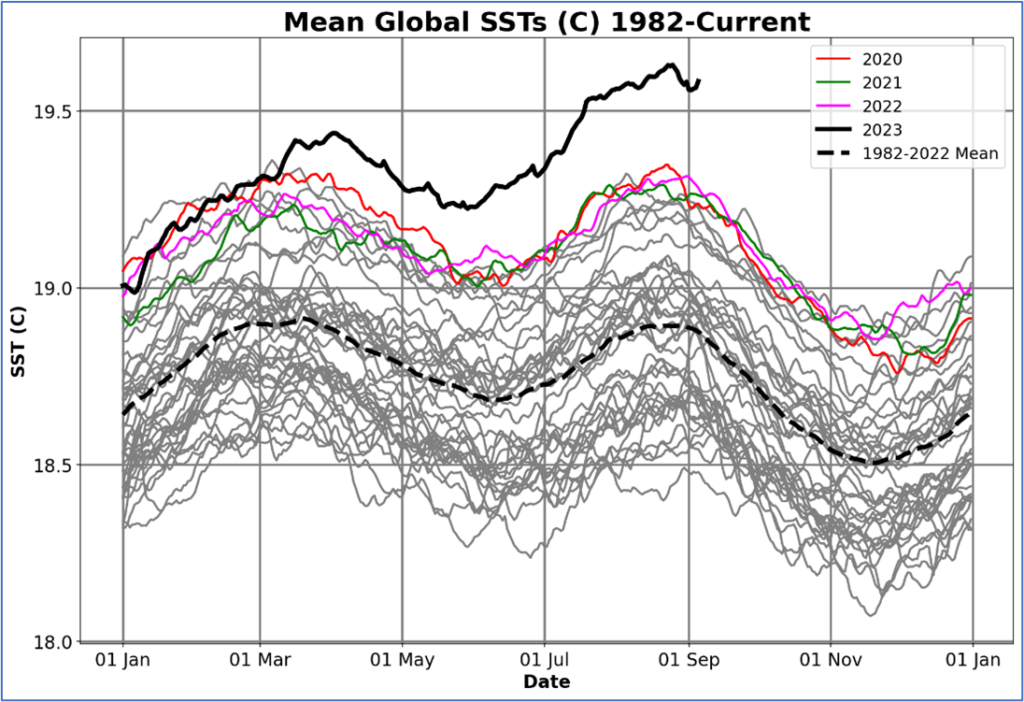The data is clear – the frequency and magnitude of extreme weather events are rising. As a result, supply chain risk is increasing, and disruptive events have been escalating at a more rapid pace. More events equate to more risk and pressure on the global supply chain. Unlike the pandemic a few years ago, which caused temporary problems, extreme weather events due to climate change will continue.
The Applied Meteorology and Climate Team at Everstream Analytics consists of atmospheric scientists/climate experts from the preeminent universities in the world. Our team has decades of experience in Applied Meteorology – taking weather and climate information and making it actionable to economic sectors and industries. The team monitors, researches, and assesses risks to the supply chain.
Most importantly, the team predicts extreme weather events at various time scales – weeks, months, seasons, and years (climate) into the future. You cannot manage what you cannot measure! With accurate predictive insights, risk can be mitigated in the short term and managed in the long term.
A year of records
If you think that the number and intensity of extreme weather events have been getting worse, you are correct. Extreme events have been increasing over the past four decades. This year in the U.S., there have been 23 extreme weather events that have resulted in over $1 billion each in damages – a record already when there is still a quarter of the year to go. This surpasses the previous record of 22 events in 2020. Climate change is reshaping the landscape of extreme weather events.
It’s a similar story around the globe. In a 10-day period in early September, devastating flooding affected Greece, Turkey, Spain, Libya, China, and southern Brazil. The final few days of September featured flash flooding in the New York City metro area. As for temperatures, July was the warmest month ever recorded on the planet; June and August were the warmest for their respective months. With three months to go, this year is virtually guaranteed to be the warmest year in modern history.
It all starts with water
The surge of extreme weather events can be directly attributed to the increase in global ocean temperatures. Ocean heat content has been consistently increasing for the past five decades and is currently at the warmest levels in history. The map below portrays the current sea surface temperature (SST) anomalies based on a 10-year normal. The areas in red depict above-normal SSTs, while the blue areas are below-normal. More than 90% of the excess heat trapped in the Earth’s system has been absorbed in the oceans via climate change.

Figure 1: Current sea surface temperature anomalies based on a 10-year normal. Source: Everstream Analytics.
How do the current levels of SSTs compare to recent history? The graph below shows the average temperature of the global oceans for each day from 1982 to now. The long-term average (1982 – 2022) is highlighted, as well as the past three years. Ocean temperatures this year are at the highest level ever recorded, and by a wide margin.

Figure 2: Average temperature of global oceans each day from 1982 until now. Source: Everstream Analytics.
The unprecedented warmth of the world’s oceans is the link and physical reason for the increase in extreme weather events. Disruptive events have been increasing in almost every category. Intense storms (both tropical and non-tropical), heat waves, wildfires, flood events, and droughts have been increasing on virtually every continent. The additional heat via the oceans is the driver or fuel behind these events. Overall, this continues to put pressure on the global supply chain.
Looking ahead, is there any indication of the trend of extreme weather events changing? As long as the global oceans remain at these unpreceded levels, the frequency and severity of the extreme weather events (the disruptors in the supply chain) will continue and likely accelerate. All the computer models which predict ocean temperatures, and global air temperatures, indicate further warming of the oceans going forward.
Learn more in our latest climate report
Jon Davis leads the Everstream Analytics weather and climate team as Chief Meteorologist. With over 35 years of experience, he is widely considered one of the foremost experts on the impact of weather and climate on global commodities and business.